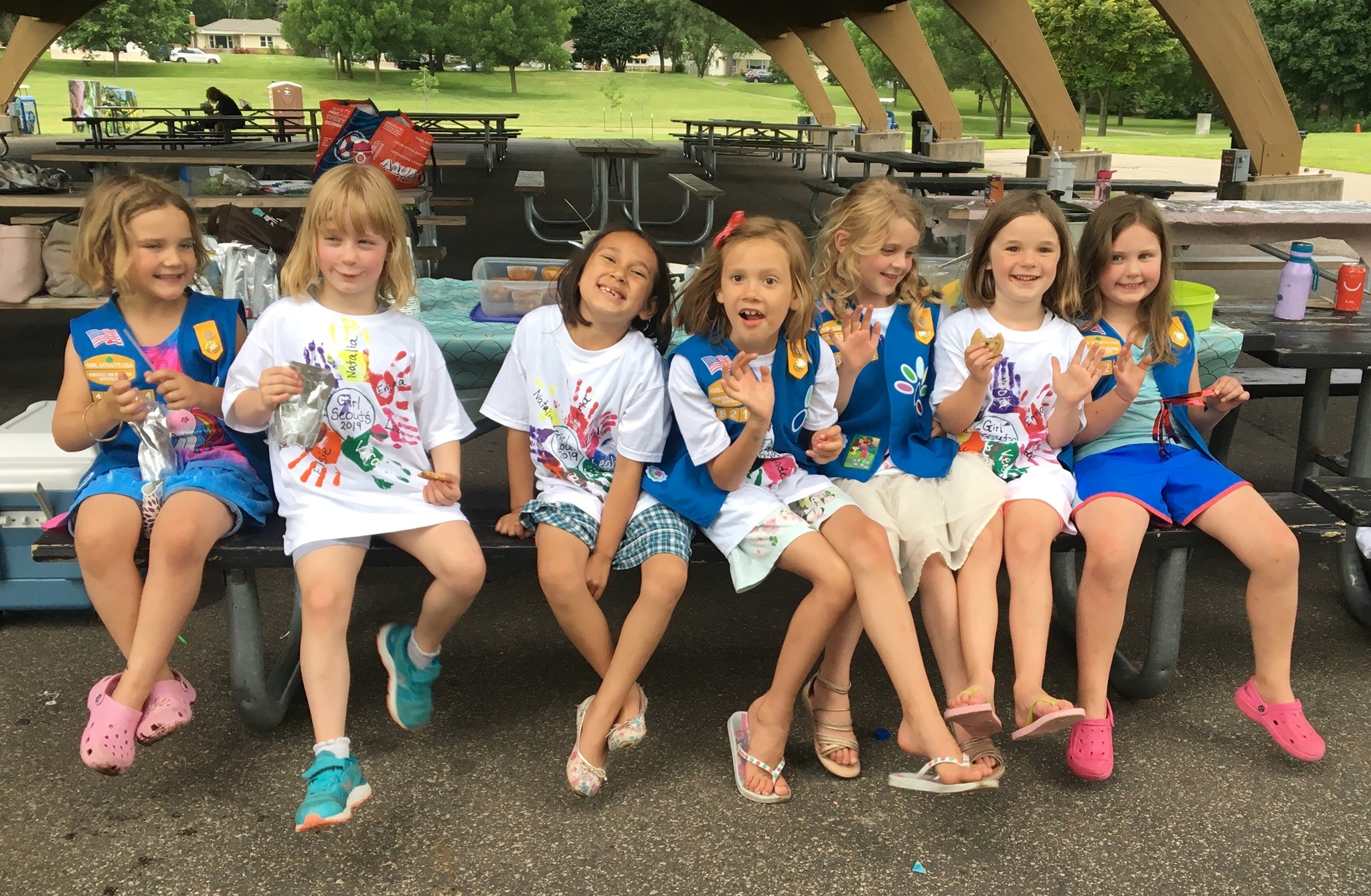 With a troop of 14 Daisies, I easily get wrapped up in the excitement and activities and forget to capture these Girl Scout moments in photos. Before I know it, coats are on and parents are at the door ready to pick up their girls. Perhaps you can relate, or, for you it’s not forgetting to take pictures, but the struggle to capture a blur of energetic, twirling Girl Scouts in unfavorable lighting conditions.
With a troop of 14 Daisies, I easily get wrapped up in the excitement and activities and forget to capture these Girl Scout moments in photos. Before I know it, coats are on and parents are at the door ready to pick up their girls. Perhaps you can relate, or, for you it’s not forgetting to take pictures, but the struggle to capture a blur of energetic, twirling Girl Scouts in unfavorable lighting conditions.
Lighting is the keyword here. Photography, after all, is producing images by the action of radiant energy and especially light on a sensitive surface (such as film or an optical sensor). These days, most of us use optical sensors on our mobile phones to produce photos. We rely on the technology of the phone (and often filters) to do their thing and make it look good. Yet, no matter how much the technology advances, there will always be things you can do as the photographer to maximize the photo “straight out of camera” (read: without filters or edits).
Put Your Flash to Work
Don’t believe your phone camera is smarter than you. Even in favorable lighting conditions, I often override the auto flash settings, and select “On.” When you’re indoors with overhead lights, whether you’re meeting at a library, a place of worship, a community center, or your home, it’s tempting to think the light is bright enough. Often these lights are tinted yellow, orange, or purple, which will negatively affect the white balance. Because the light comes from angles you can’t change, it can create harsh shadows under eyes, noses, chins, etc. The flash will help correct the color of the lighting as well as fill in those unflattering shadows.

Change the Physical Space
If you’re adventuring outside, clouds are actually your friend. Clouds create a soft filter, eliminating the harsh shadows. Sunlight can be beautiful in photos, but its best to avoid mid-day/high-noon lighting. Clearly you’re not going to plan your meetings around optimal times of day for lighting, so you’ll need to work with what you’ve got. If it’s mid-day and sunny, go ahead and take those candid photos, but if you want a group photo at the end of the meeting, move the troop to the shadow of a large tree or building, and position them to face the light source. Make sure everyone is completely in shadow, or your camera will have a hard time deciding what to expose for: the bright sunlight speckling their faces or the space in the shadows. The same goes for indoor photos, move your subjects so they are facing the light source (if possible) and play around with turning some lights on or off.
Be Mindful of Movement
The lower the light, the slower the shutter speed on the camera so it can allow more light in. Think of this like a faucet, the water being light: if you turn the water on then off quickly, you’ll get less water than if you let it run longer before cutting off the flow. What does this mean for movement? The slower the shutter speed, the more blur of movement you’re going to capture like shaking hands, dancing Girl Scouts, etc. But the more light you have, the less the camera needs to slow the shutter speed. So again, optimize the lighting. If you can ask your girls to sit still for a moment and smile, go for it. In my experience, this can incite more silliness or resistance to photos (With the younger girls at least!).
Frame It Up
In composing or framing your photos, follow the rule of thirds. Many phones now have this grid of thirds as a feature you can turn on or off. The rule of thirds breaks an image into three sections horizontally and three vertically (like a tic-tac-toe grid). For group photos, frame it so the eyes of the farthest row of people are at the top third horizontal line. Same goes for individual subject photos—for one person, play around with framing their eyes at the intersection of the top horizontal line and the left or right vertical line. Also, check the objects in the background and adjust so it doesn’t look like there is a lamp post or tree poking out of someone’s head.
As troop leaders, our role doesn’t require capturing photos, but it is certainly fun to have moments to look back on as the troop grows older and to share with the girls’ families. And don’t forget to share these moments on social media, email, or by actually printing them. After all, that’s the point, isn’t it?
If you want to dig deeper into the science behind photography, check out articles on shutter speed, aperture, and ISO: the three essential tools of a photographer and the components that make up exposure.
Lastly, remember to enjoy and be in the moment—mental pictures are great too!
 Sara Gove – Sara is a professional photographer and writer in the Twin Cities. She loves leading and learning from her energetic troop of second-year Daisies (including her niece), and especially enjoys taking them on outdoor adventures like hiking.
Sara Gove – Sara is a professional photographer and writer in the Twin Cities. She loves leading and learning from her energetic troop of second-year Daisies (including her niece), and especially enjoys taking them on outdoor adventures like hiking.